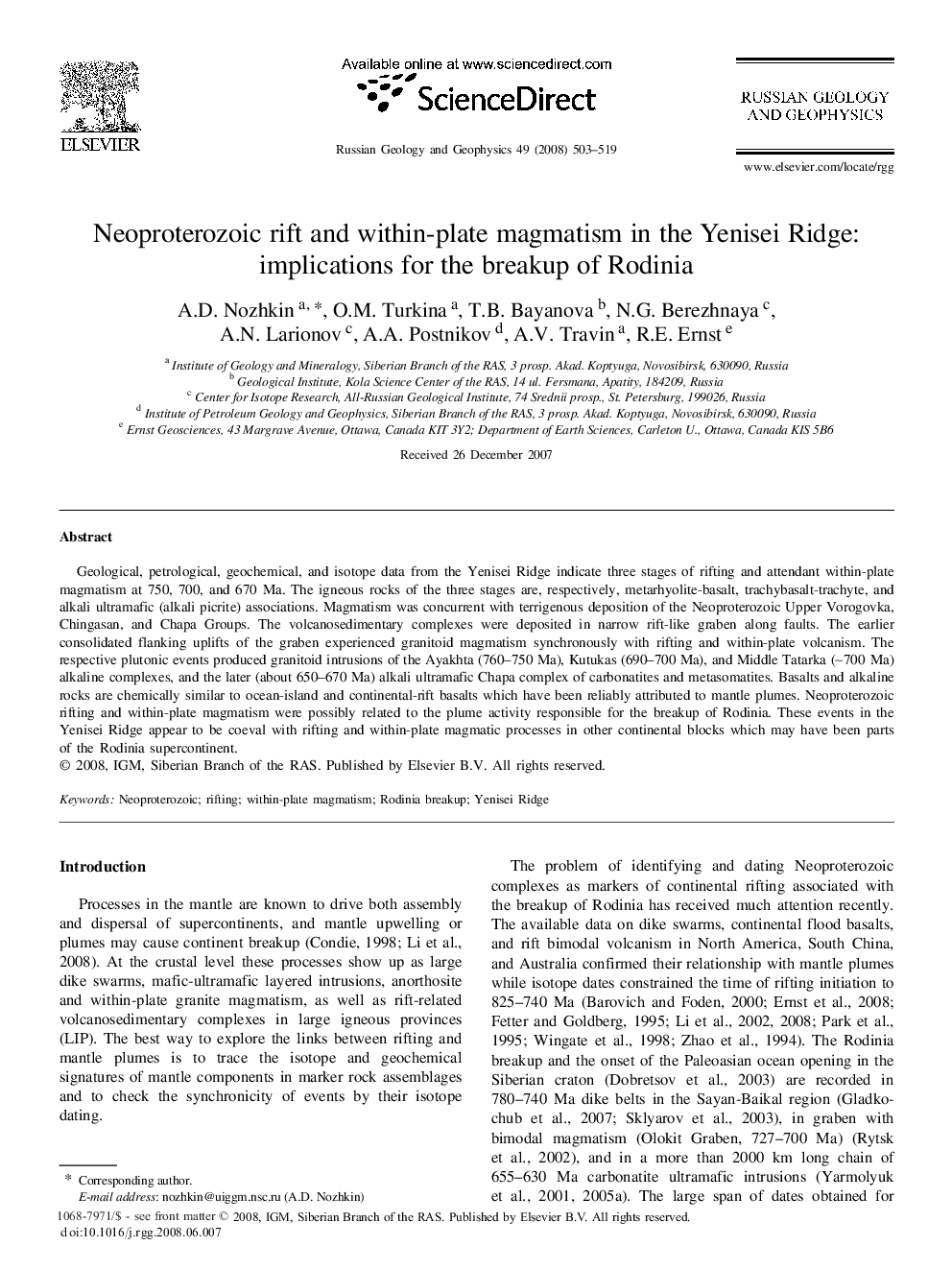| Article ID | Journal | Published Year | Pages | File Type |
|---|---|---|---|---|
| 4738145 | Russian Geology and Geophysics | 2008 | 17 Pages |
Geological, petrological, geochemical, and isotope data from the Yenisei Ridge indicate three stages of rifting and attendant within-plate magmatism at 750, 700, and 670 Ma. The igneous rocks of the three stages are, respectively, metarhyolite-basalt, trachybasalt-trachyte, and alkali ultramafic (alkali picrite) associations. Magmatism was concurrent with terrigenous deposition of the Neoproterozoic Upper Vorogovka, Chingasan, and Chapa Groups. The volcanosedimentary complexes were deposited in narrow rift-like graben along faults. The earlier consolidated flanking uplifts of the graben experienced granitoid magmatism synchronously with rifting and within-plate volcanism. The respective plutonic events produced granitoid intrusions of the Ayakhta (760–750 Ma), Kutukas (690–700 Ma), and Middle Tatarka (˜700 Ma) alkaline complexes, and the later (about 650–670 Ma) alkali ultramafic Chapa complex of carbonatites and metasomatites. Basalts and alkaline rocks are chemically similar to ocean-island and continental-rift basalts which have been reliably attributed to mantle plumes. Neoproterozoic rifting and within-plate magmatism were possibly related to the plume activity responsible for the breakup of Rodinia. These events in the Yenisei Ridge appear to be coeval with rifting and within-plate magmatic processes in other continental blocks which may have been parts of the Rodinia supercontinent.
